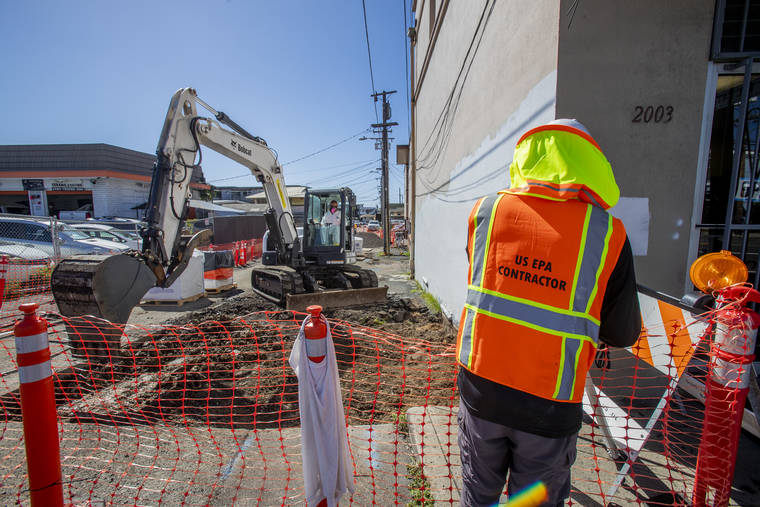Contaminated soil removed from Kalihi street

DENNIS ODA / DODA@STARADVERTISER.COM
Environmental Protection Agency crews begin the removal of lead contaminated soil beneath Factory Street near the intersection of North King Street. The contaminated soil was placed in containers for shipping to the mainland for disposal.
The U.S. Environmental Protection Agency announced today it is in the final phase of its project to remove lead-contaminated soil from beneath Factory Street in the Kalihi-Palama neighborhood. Opens in a new tab
Crews have removed the lead-contaminated soil in sections over the past seven weeks, and are now repaving Factory Street.
Work began Jan. 20 Opens in a new tab on the stretch between Waterhouse and King streets, resulting in closures and detours. Starting today, no parking will be permitted on the paved portion of the street for the next two weeks to allow it to dry completely.
The long-awaited project had initially been delayed three months because the EPA needed more time to find proper disposal sites. Both the lead-contaminated soil and leftover asphalt and concrete will be shipped to the U.S. mainland for disposal.
The lead removal project was initiated in response to a request from the Hawaii Department of Health last April.
Don't miss out on what's happening!
Stay in touch with breaking news, as it happens, conveniently in your email inbox. It's FREE!
Because the privately-owned street had no designated owner, the EPA had to go to federal court for an administrative warrant to access the property.
The EPA found extremely high levels of lead — up to 24,000 parts per million, which is 60 times the threshold limit of 400 parts per million — under one portion of Factory Street.
This was of great concern, particularly when the road, which is in a dense, urban neighborhood with numerous residents and within a half-mile of schools and parks, began crumbling. The neglect resulted in exposed cracks and large potholes.
If children, who are at high risk for lead Opens in a new tabpoisoning Opens in a new tab, were playing in those potholes, they could have potentially been exposed to the lead-contaminated soil, particularly if they put their hands or toys in their mouths.
“EPA is working hard to reduce childhood exposure to lead in Hawaii,” said EPA Pacific Southwest Regional Administrator John Busterud in a news release. “The work completed today is an important step towards that goal.”



